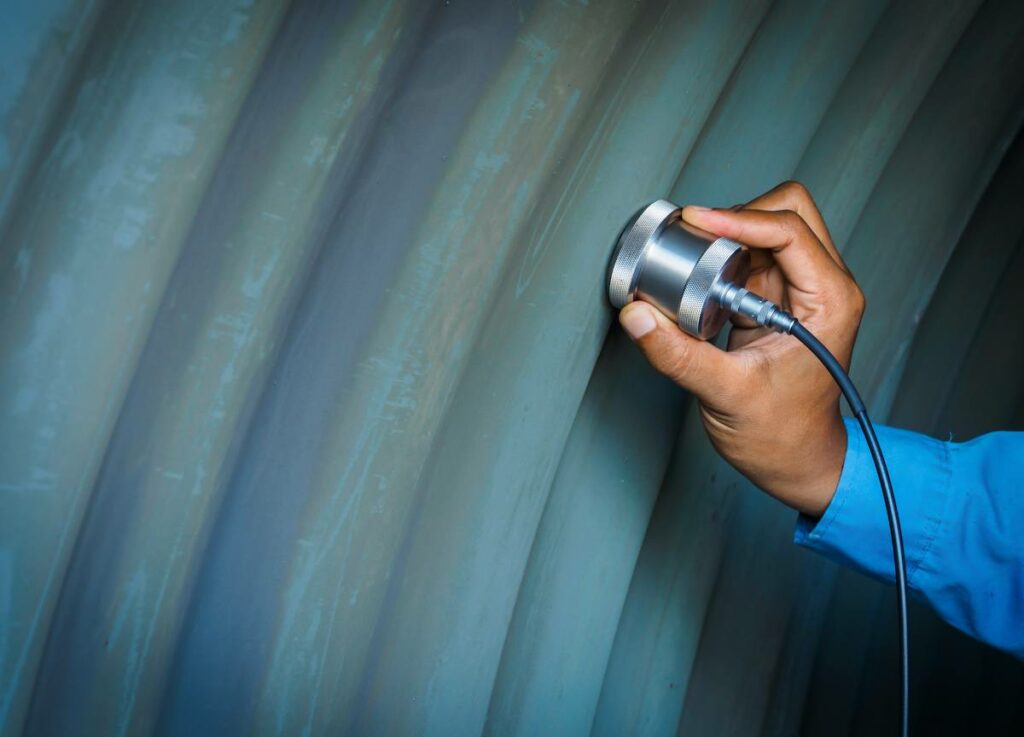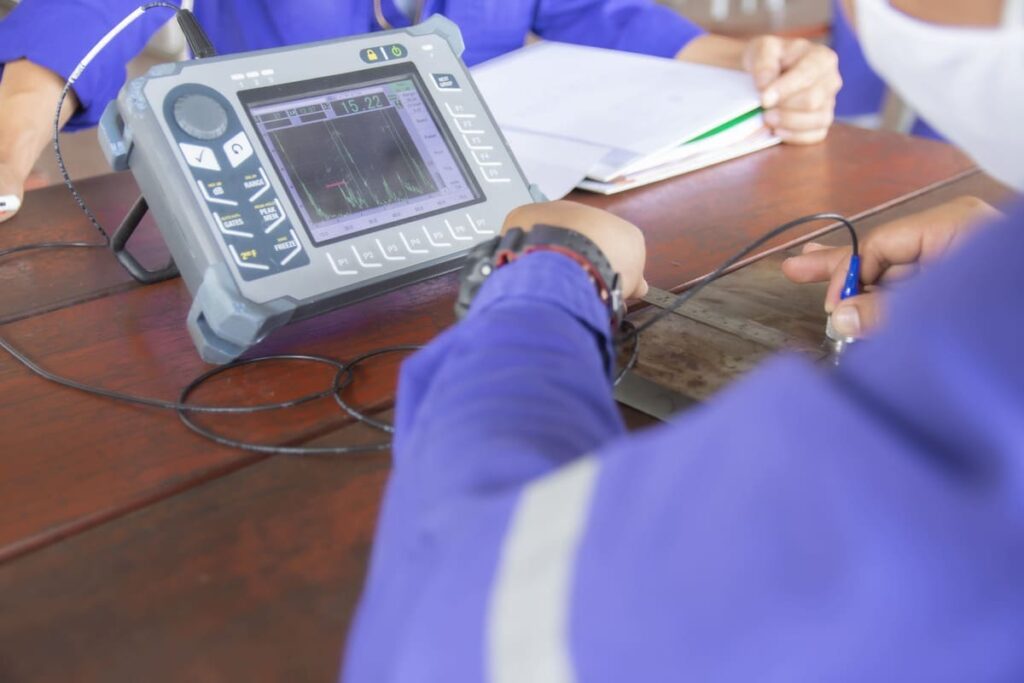Ferrite testing, also known as magnetic permeability testing, is a non-destructive testing technique used to measure the ferrite content in austenitic and duplex stainless steel materials. Ferrite is a type of iron crystal structure present in stainless steel alloys, and its presence can affect the material's mechanical properties and corrosion resistance.
Our team of highly experienced certified professionals offers quality industrial ferrite testing in Grande Prairie and the Peace Region. We use the latest technology to ensure you get the information you need.
Our NDT level 3 professional has 15 years of experience in the NDT industry and practises precision and attention to detail on every job. Our team stays current on all the latest codes and industry requirements through ongoing training, ensuring a high-quality inspection standard.
Call us today, and we can ensure that the components in your project meet industry standards and regulatory requirements.


What is Ferrite Testing?
Ferrite testing involves using a magnetic field to induce a voltage in the tested material. The voltage induced is proportional to the amount of ferrite in the material. The test is typically performed using a hand-held instrument that measures the voltage and displays the ferrite content as a percentage or ferrite-number (FN).
Ferrite testing is an important quality control tool when stainless steel materials are used for piping, valves, and other critical components. By measuring the ferrite content, ferrite testing can help ensure the material meets the required mechanical properties and corrosion resistance specifications. Ferrite testing also verifies the proper heat treatment of materials and monitors the effects of welding and other fabrication processes on the ferrite content of the material.
What is Ferrite Testing?
Ferrite testing is widely used in the oil and gas industry for various purposes, including:
1. Quailty Control:
Ferrite testing can verify that the stainless steel materials used in construction meet the required mechanical properties and corrosion resistance specifications. This helps to ensure the quality and reliability of the equipment.
2. Welding procedure qualification:
Ferrite testing can qualify welding procedures and be used to verify that the welding process does not significantly affect the ferrite content of the material. This is important because changes in the ferrite content can affect the material’s mechanical properties and corrosion resistance.
3. Material Selection
Ferrite testing can determine the ferrite content of different stainless steel materials, which helps select the appropriate material for specific applications.
4. Corrosion assessment:
Ferrite testing can qualify welding procedures and be used to verify that the welding process does not significantly affect the ferrite content of the material. This is important because changes in the ferrite content can affect the material’s mechanical properties and corrosion resistance.
5. Maintenance and inspection:
Ferrite testing is used for periodic maintenance and inspection of oil and gas equipment to verify that the ferrite content has not changed over time. This helps to ensure the continued reliability and safety of the equipment.
Overall, ferrite testing is a valuable tool for ensuring the quality, reliability, and safety of stainless steel materials used in the oil and gas industry.